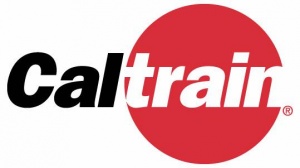Caltrain applauds MTC endorsement of Regional Agreement

The Metropolitan Transportation Commission approval today of a regional agreement to fully fund the electrification of Caltrain is the first step in bringing modernized rail service to the dynamic region spanning San Francisco to San Jose.
The Memorandum of Understanding between the California High-Speed Rail Authority and more than a half-dozen Bay Area public agencies takes advantage of local, regional and federal funding to leverage hundreds of millions of dollars in high-speed rail matching funds for investment in electrification and modernization of Caltrain. This investment could result in a modernized Caltrain system as soon as 2020.
“Today’s action represents the first step in what will eventually be a great leap forward for transit on the Peninsula,” said Caltrain Executive Director Mike Scanlon. “It demonstrates how we can effectively prepare for the future and at the same time realize tangible, more immediate benefits for our riders and our communities.”
The agreement must be endorsed by all the parties, which include the San Francisco County Transportation Authority, the San Mateo County Transportation Authority, the Santa Clara Valley Transportation Authority, the City of San Jose, the City and County of San Francisco, and the Peninsula Corridor Joint Powers Board, which owns and operates Caltrain.
Since the regional agreement was announced last week support for the critical project that would electrify and modernize the Caltrain system has been growing. A list of positive endorsements for the “blended” system is posted the Caltrain website.
ADVERTISEMENT
At today’s MTC hearing, a broad range of interests representing business, labor, environmentalists and local governments expressed overwhelming support for the breakthrough agreement.
With an electrified system Caltrain will be able to operate lighter-weight electric vehicles with significant performance advantages compared to the existing diesel rail technology.
Electrification will bring a faster, cleaner, quieter, more efficient rail system to the corridor, with more frequent service to more stations and significantly increased ridership. A modernized Caltrain system will accommodate future job and population growth in the region.
In addition, modernization is an important step in stabilizing the rail agency’s long-struggling finances. Caltrain is one of the few transit agencies in the country that does not have its own, dedicated tax base or source of revenue.
More riders will bring more revenue to the system, which has continued to depend on one-time funding, administrative cuts and service reductions to resolve an annual structural deficit. Increased revenues generated by increased ridership would reduce the subsidy required to operate the service, improving the financial viability of the system and freeing up funding to support other local transit services in San Francisco, San Mateo and Santa Clara Counties.
Additional improvements, which would be done after Caltrain is electrified, would be needed before future high-speed rail service could operate on the corridor.
Currently, Caltrain is studying the feasibility of various alternatives to determine what infrastructure improvements will be needed to support high-speed rail while minimizing the impact on surrounding communities.
The agreement specifies that future improvements would be limited to support blended high-speed and commuter rail operations on a system that is primarily two-tracks.

